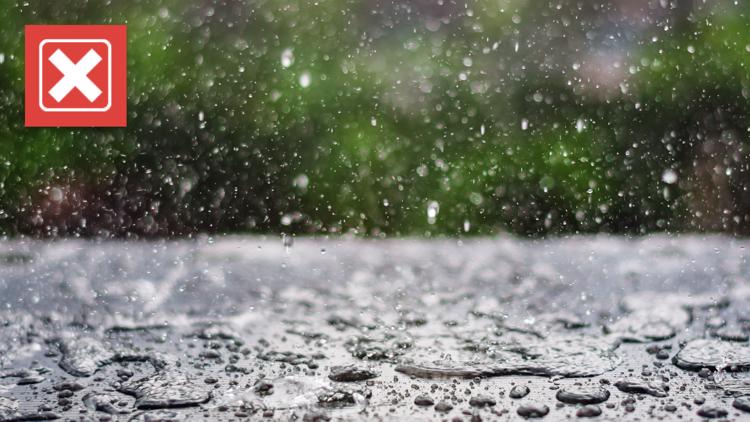Rain could damage a portable generator and lead to electrocution. Generators should not be used indoors or in enclosed spaces, either, due to carbon monoxide risks.


Thunderstorms are most common during spring and summer. Storms with heavy rain and high winds can knock down trees and power lines, causing power outages. As a result, many homeowners invest in generators to get their power back up and running during an outage.
During past thunderstorm seasons, people have turned to Google to ask whether they can run generators in the rain to power their home.
THE QUESTION
Should you use a portable generator in the rain?
THE SOURCES
THE ANSWER
![]()
No, you shouldn’t use a portable generator in the rain, unless you have a canopy or another suitable cover.
WHAT WE FOUND
The Occupational Safety and Health Administration (OSHA) says you should never use a generator indoors or in enclosed spaces such as garages and basements. This is due to the risk of carbon monoxide (CO) poisoning from toxic engine exhaust.
Those who are using a generator to power their home during an outage should operate it on a dry surface outside and avoid using it in the rain or wet conditions, OSHA and the Red Cross say. Rain could damage the generator and/or lead to electrocution. You should also avoid touching the generator with wet hands, or working on its electrical components while wet or standing in water, due to the risk of electrocution.
In order to protect your generator from wet weather, you can use a canopy or another covering. One option is a tarp held up on poles, the Red Cross says. The Consumer Product Safety Commission (CPSC) says people should operate generators “under an open, canopy-like structure on a dry surface where water cannot reach it or puddle or drain under it.”
Consumer Reports also recommends buying a tent for a generator that keeps it shielded from the rain but well-ventilated so the machine doesn’t overheat. You shouldn’t use your generator in the midst of severe weather like a hurricane, though, because the cover could blow away and leave the machine exposed to heavy rain.
The CPSC says generators should be placed outdoors at least 20 feet from your home. People should close windows and other openings in the path of the generator’s exhaust, and ensure the exhaust is directed away from the home and other buildings.
Generators should also be placed far away from windows, doors and vents that could allow carbon monoxide to make its way indoors. Anyone with symptoms of carbon monoxide poisoning, including dizziness, headaches, nausea and tiredness, should get fresh air and immediately seek medical attention.
Here are some additional tips and warnings on generators from the Red Cross, CPSC and OSHA:
- Turn it off and let it cool down before refueling. Gasoline spilled on hot engine parts could start a fire.
- Use the type of generator fuel recommended in the instructions or on the generator label.
- Plug appliances directly into the generator, or use a heavy duty, outdoor-rated extension cord that is rated at least equal to the sum of the appliance loads in watts or amps.
- Never try to power your house wiring by plugging the generator into a wall outlet. This puts people at risk of electrocution.
- Do not overload a generator. This can lead to overheating, which creates a fire hazard. An overload occurs when the total wattage of appliances plugged into the generator exceeds what the machine can handle.
- Look for signs that your appliances have gotten wet. Do not touch wet appliances that are still plugged into an electrical source.
The VERIFY team works to separate fact from fiction so that you can understand what is true and false. Please consider subscribing to our daily newsletter, text alerts and our YouTube channel. You can also follow us on Snapchat, Instagram, Facebook and TikTok. Learn More »
Follow Us
Want something VERIFIED?
Text: 202-410-8808
.png)









 English (US) ·
English (US) ·